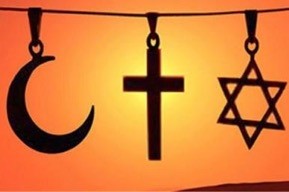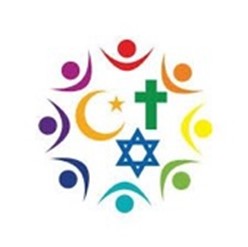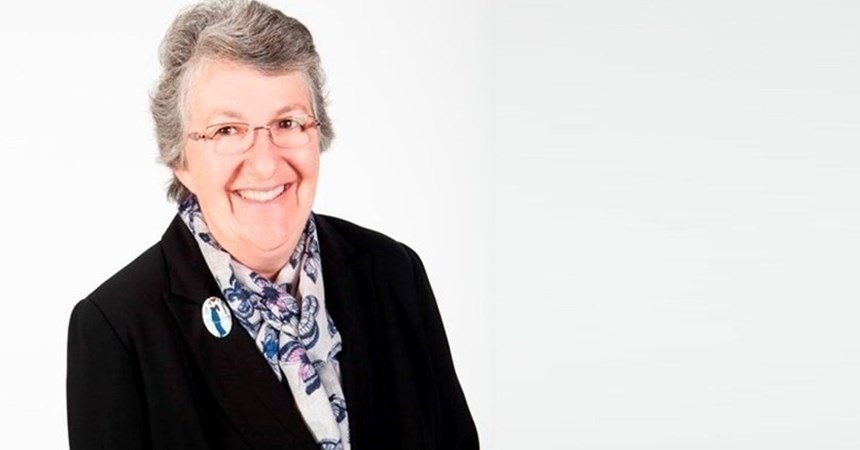The descriptor that went with the topic was:
Australians take pride in being a multicultural society today, displaying signs of intolerance towards religion. Recent issues in the media have brought this issue to the forefront. What has been your experience, and do you think Australia should or could change?
The three of us presented from very different perspectives due to our religious, racial, gender and cultural backgrounds.

I reminded the people of the following contemporary issues that appear in our headlines on a regular basis, and which form a significant degree of anti–religious dialogue or debate in the public space:
- Post Royal Commission into the Institutional Response to Child Sexual Abuse
- Religious Freedom
- Abortion
- Euthanasia
- End of life care
- Reproductive Technologies
- Genetic Engineering
- Special Religious Education
- Climate Emergency
- Terrorism
And the ‘isms’ which are being used to define us:
- Atheism,
- hedonism,
- humanism,
- individualism,
- feminism,
- theism,
- fundamentalism,
- racism,
- sexism,
- narcissism,…….
As well as the dualism:
- Public and private
- State and religion
- Rational and non-rational
- Good and bad
- Left and right
 People appear to desire taking the ‘poles’ of thoughts and opinions, an either/or mentality rather than a both/and option.
People appear to desire taking the ‘poles’ of thoughts and opinions, an either/or mentality rather than a both/and option.
I then went on to speak about the results of the latest 2016 national Census which revealed that we are a religiously diverse nation, with Christianity remaining the most common religion (52 per cent of the population).
Islam (2.6 per cent) and Buddhism (2.4 per cent) were the next most common religions reported. Nearly a third of Australians (30 per cent) reported in the Census that they had no religion in 2016.
The religious makeup of Australia has changed gradually over the past 50 years.
In 1966, Christianity (88 per cent) was the main religion.
By 1991, this figure had fallen to 74 per cent, and further to the 2016 figure of 52 per cent.
Catholicism is the largest Christian grouping in Australia, accounting for almost a quarter (22.6 per cent) of the Australian population.
 Australia is increasingly a story of religious diversity, with Hinduism, Sikhism, Islam, and Buddhism all increasingly common religious beliefs. Hinduism had the most significant growth between 2006 and 2016, driven by immigration from South Asia.
Australia is increasingly a story of religious diversity, with Hinduism, Sikhism, Islam, and Buddhism all increasingly common religious beliefs. Hinduism had the most significant growth between 2006 and 2016, driven by immigration from South Asia.
The growing percentage of Australia’s population reporting no religion has been a trend for decades, and is accelerating. Those reporting no religion increased noticeably from 19 per cent in 2006 to 30 per cent in 2016.
The emerging question for me was:
How can we begin to dialogue with this emerging trend of public anti-religious sentiment that appears to be growing in Australia?
I spoke about how the essence of being human is to be spiritual, and that humans have within them a deep longing that seeks to be satisfied. We often refer to this as humanity’s search for meaning. Religion gives to some the answers they long to have satisfied, but for many it is not enough. I then went on to speak about Modernity which began some time after the middle ages in the 15th Century, with the advent of the Age of Reason and the Age of the Enlightenment. We possibly mark this most by the Industrial Revolution and the ensuing significant developments in the fields of science, education, travel, politics, warfare, technology, philosophy, theology, social sciences and culture.
Our movement, over less than 500 years, from being humans who gathered in small communities, to a global village, has impacted on our understanding of what it means to be human, and hence what people begin to understand as the place of religion in that rapidly emerging world.
In preparing for this presentation, I came across an article written in Eureka Street by Andrew Hamilton on 5 June - New Zealand's model for public religion. This part of my presentation made sense to many of those gathered and so I share excerpts from his article with you:
After the response to the Christchurch murders many Australians have looked more attentively to New Zealand for wisdom. Some remark on the part that the Maori religious culture plays in public life. Public events include traditional Maori blessings, in which all are expected to join. The religious dimension, which is inescapably articulated in public life, demands that people are at home in both a secular and a religious culture and familiar with the symbols and languages appropriate to each.
This contrasts with Australia where the public culture is secular, enjoying its emancipation from an earlier time when Christian faith and morality were privileged and enshrined in law.
Central to the Australian relationship between religion and public culture is wariness of any attempt to proselytise or to impose religious beliefs and moral practices. Instead public and religious language are compartmentalised, and participation in religious ritual is optional. Any exceptions to this rule are controversial and reasons always need to be given to justify them. The virtue that is sought in the relationship between public and religious culture is tolerance. It is defended by fencing the boundaries that separate them.
…………
The New Zealand experience, however, prompts reflection on the adequacy of this Australian settlement, particularly in the accompaniment of people who are disadvantaged. Some of these suffer from a loss of meaning in their lives and seek to find it in the face of hard challenges. They may raise questions that traditionally religions have fielded.
These include: What happens to us after death? Is the world ultimately impersonal? If there is a God, how come the world in in such a mess? Is there forgiveness? Some ask such questions in response to traumatic experience. Others try to reconcile their lives with an inherited framework of belief, often enough badly understood.
To accompany people asking these existential questions, we must join with them in conversation. This does not mean giving them answers, but it does mean listening to the depth of their question without cheapening it, allowing it to touch us at the depth at which it is asked, and finding words with which to respond to it. This is an exercise in multiple translation — from and into the language of the person we accompany, from and into the language of whatever beliefs ground our own values, from and into the language of the tradition we inherit. In such translation we shall often be flying blind.
The delicacy of such accompaniment calls for practice in translation. The advantage of the New Zealand practice of bringing together the public culture and the religious culture of one of its major groups is that it offers an opportunity to develop skill in translating from one to the other in a way that respects each. The limitation of the Australian separation of religious language and symbols from those of the secular culture is that it leaves one poorly resourced for translation. The encounter of cultures is avoided in the interests of tolerance. Tolerance certainly avoids bullying and ensures not buying into fights. But it can also discourage personal engagement in others' worlds.
The key to addressing this challenge is to develop an organisational culture in which people feel encouraged to speak together about the deeper questions that faith addresses. This is countercultural, because these things are ordinarily regarded as matters private to individuals. Conversation about them demands a higher than normal level of trust between participants.
To reach this level of trust, however, is the mark of a good organisation and it prepares people to accompany vulnerable people more deeply. Open conversation also has the advantage of opening the resources of the tradition in an exploratory way. It puts the language of the religious tradition and of other sources into play, not as an authority, an expectation nor a pressure, but as a resource.
I finished my presentation by inviting those gathered to consider what it looks like to be Countercultural and Prophetic. I believe that in this secular day and age, an age in which religion is rejected, our faith as Christians calls us to be countercultural and prophetic.
As Christians we are incarnational (God became human) and so we have in the person of Jesus the model of what it means to be fully human. We are Trinitarian, we have an understanding of a relational God, Father, Son and Spirit, and therefore we are called to be relational.
We are called to serve the world because of God’s love for us and our reciprocal love of God. Love the Lord you God with all you heart, with all your soul, with all your mind and with all your strength and love your neighbour as yourself. God’s spirit unbends and re-shapes us so as to bring the good news to all, so that justice prevails, peace reigns and we are set free.

